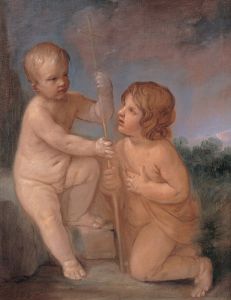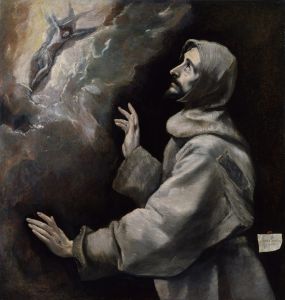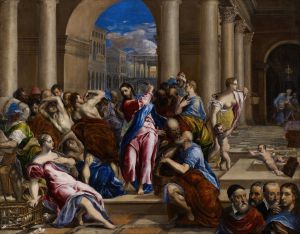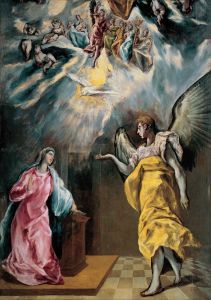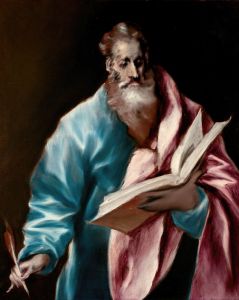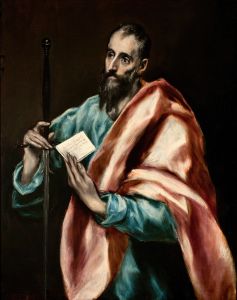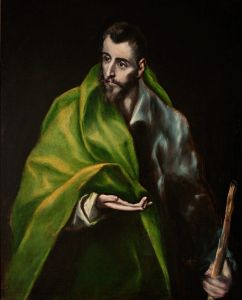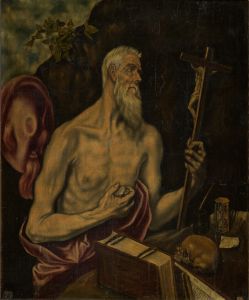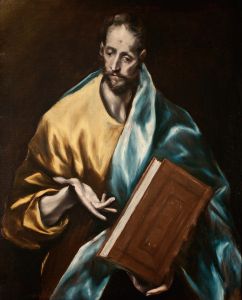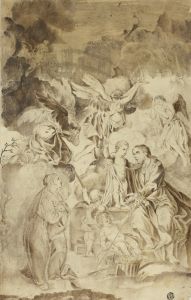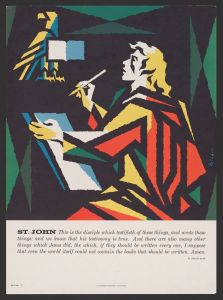
St. John
A hand-painted replica of El Greco (Domenikos Theotokopoulos)’s masterpiece St. John, meticulously crafted by professional artists to capture the true essence of the original. Each piece is created with museum-quality canvas and rare mineral pigments, carefully painted by experienced artists with delicate brushstrokes and rich, layered colors to perfectly recreate the texture of the original artwork. Unlike machine-printed reproductions, this hand-painted version brings the painting to life, infused with the artist’s emotions and skill in every stroke. Whether for personal collection or home decoration, it instantly elevates the artistic atmosphere of any space.
El Greco, born Domenikos Theotokopoulos in 1541 in Crete, was a prominent painter, sculptor, and architect of the Spanish Renaissance. His work is characterized by its dramatic and expressionistic style, which was unique for his time. One of his notable paintings is "St. John," which exemplifies his distinctive approach to religious subjects.
"St. John" by El Greco is a compelling representation of St. John the Evangelist, one of the twelve apostles of Jesus and traditionally considered the author of the Gospel of John, the Epistles of John, and the Book of Revelation. El Greco's depiction of St. John is marked by his signature elongated figures and vibrant use of color, which convey a sense of spiritual intensity and otherworldliness.
In this painting, St. John is often depicted with his traditional attributes, such as an eagle, which symbolizes his soaring theological insights, or a book or scroll, representing his contributions to the New Testament. El Greco's portrayal captures the apostle in a moment of divine inspiration or contemplation, a common theme in his religious works. The figure of St. John is typically shown with an expressive face, reflecting a deep connection to the divine and an intense emotional state.
El Greco's use of color in "St. John" is particularly noteworthy. He employs a rich palette, with bold contrasts between light and dark, to create a dramatic effect. This use of chiaroscuro enhances the spiritual and mystical quality of the painting, drawing the viewer's attention to the saint's face and hands, which are often highlighted against a darker background. The elongated form of St. John, a hallmark of El Greco's style, adds to the ethereal and transcendent quality of the work.
The painting reflects El Greco's unique synthesis of Byzantine traditions, which he absorbed during his early years in Crete, and the Western artistic influences he encountered in Italy and Spain. His time in Venice exposed him to the works of Titian and Tintoretto, whose use of color and dynamic compositions left a lasting impact on his style. Later, in Rome, he was influenced by the Mannerist movement, which is evident in the elongated proportions and complex poses of his figures.
El Greco eventually settled in Toledo, Spain, where he produced many of his most famous works. His art was well-received by the Spanish clergy and nobility, who appreciated his ability to convey religious themes with emotional depth and spiritual fervor. "St. John" is a testament to El Greco's mastery of religious iconography and his ability to infuse traditional subjects with a modern, expressive sensibility.
Today, El Greco is celebrated as one of the most important figures of the Spanish Renaissance, and his works, including "St. John," continue to be studied and admired for their innovative style and profound spiritual expression. His influence can be seen in the works of later artists, such as Francisco Goya and Pablo Picasso, who admired his bold use of color and form. "St. John" remains a significant example of El Greco's contribution to the world of art, reflecting his unique vision and enduring legacy.






